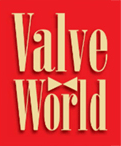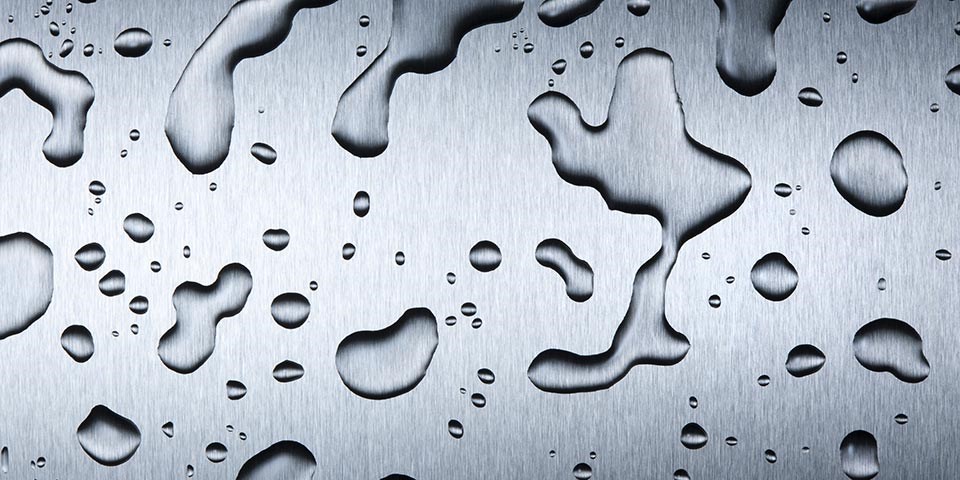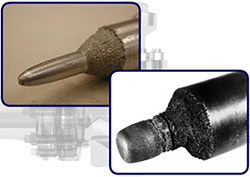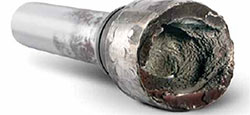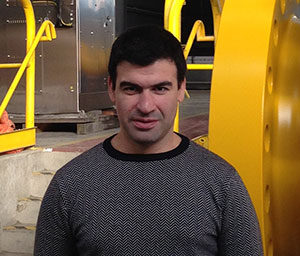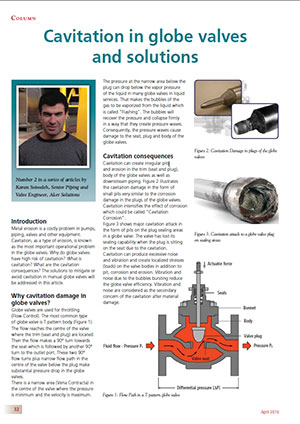Globe valves are often used for throttling, and the most common design is the T pattern body (Figure 1).
However, the two 90° turns made by the flow before and after the plug plus the narrow flow path in the centre of the valve below the plug result in a substantial pressure drop.
If the pressure in a liquid flow at the narrow area below the plug drops below the vapour pressure, bubbles of gas can vaporise from the liquid in a process called “flashing”.
When these bubbles recover pressure they collapse firmly in a way that creates pressure waves.
It is these pressure waves can cause damage to the seat, plug and body of the globe valves.
Cavitation consequences
Cavitation can create irregular pits and erosion in the valve trim (seat and plug) and body as well as in downstream piping (Figure 2).
Cavitation intensifies the effect of corrosion which could be called “Cavitation Corrosion”.
Figure 3 shows a major cavitation attack in the form of pits on the plug sealing areas in a globe valve.
Damage such as this will cause the valve to lose its sealing capability.
Cavitation can also produce excessive noise and vibration and create localized stresses (loads) on the valve bodies in addition to pitting corrosion and erosion.
Vibration and noise reduce the globe valve’s efficiency and are therefore considered as the secondary concern of the cavitation after material damage.
Cavitation affected parameters
Cavitation does not necessarily create damage. The extent of the cavitation damage depends on the following parameters:
- Pressure drop: Higher pressure drop increases the cavitation effect. T type globe valves are severely exposed to cavitation because of the high value of the pressure drop.
- Leakage: Leakage is the movement of the fluid from the high to the low pressure area. This pressure drop
intensifies the cavitation risk especially when the valve is closed. - Material: Harder materials are less vulnerable to the cavitation damage.
- Valve size: Cavitation could be more severe in the larger size valves.
- Trim design: “Anti-Cavitation” or “Multi Step” trim design reduces the cavitation effect.
- Flow regime: Turbulent and high velocity flow increases the risk of erosion and cavitation.
Cavitation reduction solutions
Anti cavitation trim: with a multi step trim design the pressure decreases in two or more stages thus avoiding a high pressure drop in a single stage.
Hard trim materials: Hard trim materials like Stellite 6 (UNS R30006) or Stellite 21 as a form of solid or overlay and 13Cr martensitic stainless steels like UNS S41000 or 415000 have higher resistance against cavitation.
New globe valves standard: American Petroleum Standard (API) has released the first edition of the new globe valve design standard (API 623) to control and avoid operation problems in globe valves like cavitation, vibration and leakage.
Alternative valve selection: More costly Y-Pattern globe valves or axial on off / control valves are good alternatives for traditional T-Type globe valves.
Conclusion
Cavitation is the major operational problem in conventional T-type globe valves.
Selecting hard trim materials like Stellite, anti-cavitation trim like multi step type and applying API 623 standard are recommended for designing the T-type globe valves.
However, selecting alternatives such as the Y Type globe or axial valves are also good solutions to reduce or avoid cavitation risk.
About Aker Solutions
Activities include subsea to surface and concept to decommissioning.
Aker Solutions has 15,000 employees at 50 locations in 20 countries

